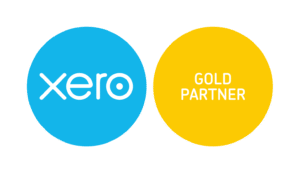The future of the internet is mobile, and it is here. Today, over 60% of internet users access the web through their mobile device, and many choose to engage with a business based on its functional and easy-to-navigate mobile responsive web app or mobile app design.
Initial decisions
The initial phase of building an app involves identifying what you require your potential customers to know, identifying a minimum viable product, researching how competitors reach their customers, identifying a unique selling point and devising a monetisation strategy.
Mobile Responsive Web App or Mobile App?
What matters the most when deciding whether to opt for a Mobile Responsive Web App or Mobile App is ensuring your user’s needs are satisfied. To do this, you must first specify your business goals and then, find the right way to reach these goals.
A comparison between the two options is detailed below.
| Mobile Responsive Web App | Mobile App |
| Can be accessed through a web browser only | Can only be accessed after the user has installed the app on a mobile device |
| Contains a navigational interface that requires an internet connection | Contains an interactive interface that can be accessed offline |
| Reaches a larger audience | Improved user engagement but possibly limited in reach |
| It costs less to develop in comparison to a mobile app | It costs more to develop in comparison to a mobile responsive web app |
Ideal team and model
Once you have decided which platform works best for your business, you will next have to decide on the ideal team and model you would prefer to work with according to your budget, timeframe and project requirements.
Time & Material Model
If you are looking for the ideal model for a long-term project that would allow room for changes along the way, this is it. This flexible approach allows you to maintain a budget to best match its requirements and changes.
Fixed Price Model
This model is best for short-term or medium sized projects when you have clear project requirements and deadlines. Here, the cost of the work is agreed upon before its development stage, and as the terms of the work are clear, the project is likely to be completed on time too.
Dedicated Team
This is ideal if you wish to be involved in the development stage, from determining the number of employees necessary for the project to managing the project and more. This model ensures a focused approach that can deliver a faster workflow, while allowing for continuous development with more of your involvement.
Here’s a comparison of each of these models to see which option works best for you:
| Time & Material | Fixed Price | Dedicated Team | |
| Size of the Project | Medium to Large | Small to Medium | Large |
| Timeframe & Budget Flexibility | Flexible | Fixed | Flexible |
| Client’s Control Over the Process | Significant | Little | Full |
| Requirements | Changing | Defined | Evolving |
The ideal development team
When putting together a development team, it is important to include the following:
- Full Stack Developer: Responsible for designing user interactions on websites and coding for mobile platforms.
- UI / UX Designer: Designs the user interfaces for apps and websites.
- Quality Assurance Lead: Responsible for taking care of the test environment of the app or site to ensure a seamless experience.
- Project Manager: Responsible for ensuring the successful completion of the project, while overseeing the project from start to finish.
Ultimately, an app that is designed with the user in mind is what will work best for your business.
For more information on how we can help you build an app in the most efficient and cost effective manner, please reach out to us on 1300 707 260 or hello@popcoinc.com.au.








